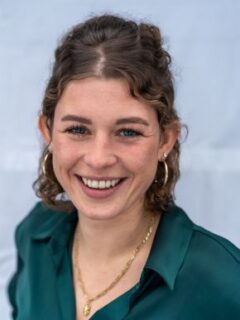Hannah Kissel
Hannah Kissel, M. Sc.
PhD Student
Biofabrication of Cell-Laden Soft/Hard-Phase Bioactive Scaffolds for Load-Bearing Tissue Engineering Applications
Supervisor: Prof. Dr.-Ing. habil. Dr. h.c. Aldo R. Boccaccini
In biofabrication, various additive manufacturing technologies are used to generate complex 3D tissue-like structures composed of biomaterials and cells in a single manufacturing procedure. Natural hydrogels are commonly used in this approach as they mimic many characteristics of the natural extracellular matrix and enable cell encapsulation within a highly hydrated environment [1]. However, these hydrogels often lack the necessary mechanical stability for applications in load-bearing tissues such as bone or cartilage. To address this limitation, inorganic bioactive fillers like bioactive glass particles can be incorporated in the hydrogel, which not only enhance the stability but also the bioactivity of the 3D construct [2,3]. Another strategy to further improve the mechanical properties of these constructs is the addition of a thermoplastic hard phase next to the soft cell laden hydrogel phase using sequential 3D (bio)printing [4]. This project will apply a combination of additive manufacturing and biofabrication techniques and composite materials to develop a new family of cell-laden soft/hard 3D bioactive glass containing scaffolds for osteochondral regeneration.
[1] Malda, J., et al., 25th Anniversary Article: Engineering Hydrogels for Biofabrication. Adv. Mater., 25 (2013) 5011-5028.
[2] Heid, S. and Boccaccini, A. R., Advancing bioinks for 3D bioprinting using reactive fillers: A review, Acta Biomaterialia, 113 (2020) 1-22.
[3] Leite, A., et al., Bioplotting of a bioactive alginate dialdehyde-gelatin composite hydrogel containing bioactive glass nanoparticles. Biofabrication 8 (2016) 1758-5090.
[4] Zehnder, T., et al., Fabrication of Cell-Loaded Two-Phase 3D Constructs for Tissue Engineering. Materials (Basel). 9, (2016) 887.

